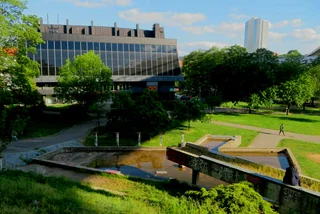Prague’s share of parks, forests, and other greenery is the 13th largest among cities in the world and ninth in Europe, according to the HUGSI index for 2020, which maps urban vegetation. The survey looked at 155 cities in 60 countries.
The index shows that there are 179.8 square meters of green space for every Prague inhabitant. Grassy and wooded areas make up 56 percent of the city’s area, with 28 percent covered by trees and 27 percent by grass, and 1 percent by water. The overall health of the vegetation was at 0.74 on a scale of zero to one. The combined score for Prague, balancing all the monitored factors, was 73.04.
Europe’s leader was Vilnius, Lithuania, which scored 77.96 overall, while Germany had five cities in Europe’s top 10. The global leader was Charlotte, North Carolina, scoring 81.12.
“I am clearly pleased with Prague’s ranking. Greening the capital is our priority. We are lucky that Prague has great conditions for that. Greenery cools our city, retains water, helps us fight heat islands, and also contributes to the city's carbon neutrality,” Prague Deputy Mayor Petr Hlubuček, responsible for the environment, said.
“Every year we plant tens of thousands of new trees, completely new forests are being created in Prague, recently in Satalice, Běchovice or Na Musile, for example. We also devote great efforts to the maintenance and revitalization of our large parks, such as Stromovka, Letná, or Vítkov. We will continue to do so,” he added.
Prague inherited some important green areas from the past. The city has been renovating existing significant green areas and has also been systematically working on establishing new green areas both on former agricultural land and unmaintained areas.
Over the last 20 years, the area of public greenery has increased by more than 300 hectares, which Prague City Hall describes as a unique increase among European cities. Another 35 hectares of new green space is currently being developed.
Prague’s largest parks and forests include the forests Kunratický les at 300 hectares, and Klánovický les at 287.4 hectares, as well as the valleys Prokopské údolí at 205.6 hectares and Bohnické údolí at 90.8 hectares. The city’s most popular wooded parks are a bit smaller with Stromovka at 91.03 hectares, Petřín at 53.79 hectares, and Divoká Šárka at 25.17 hectares.
Stromovka and the adjacent Výstaviště Holešovice, in particular, have been the subject of extensive renovations in recent years including new trees and rebuilding of the ponds. New trees have also been planted recently in Folimanka, Grébovka, and Riegrovy sady.
Other city projects include the creation of a new 18-hectare forest in Satalice in 2019 and a 13.5-hectare forest in Na Musile. At the end of 2020, the city began to address agricultural land by planting alleys of fruit trees to combat erosion. The city has also switched to non-chemical means to maintain its green spaces, and uses herds of sheep and goats to maintain the grass in some urban nature parks.
HUGSI stands for Husqvarna Urban Green Space Index. The index examines several parameters, including the percentage of urban greenery, average vegetation health, the share of green space per capita, the distribution of urban space, and the percentage of green space covered by forests or grasslands. Data from 2019 were assessed for the index for 2020. The index is made using computer vision and deep learning techniques on satellite images to determine the size, proportion, distribution, and health of green space in urban areas.












 Reading time: 3 minutes
Reading time: 3 minutes 






















